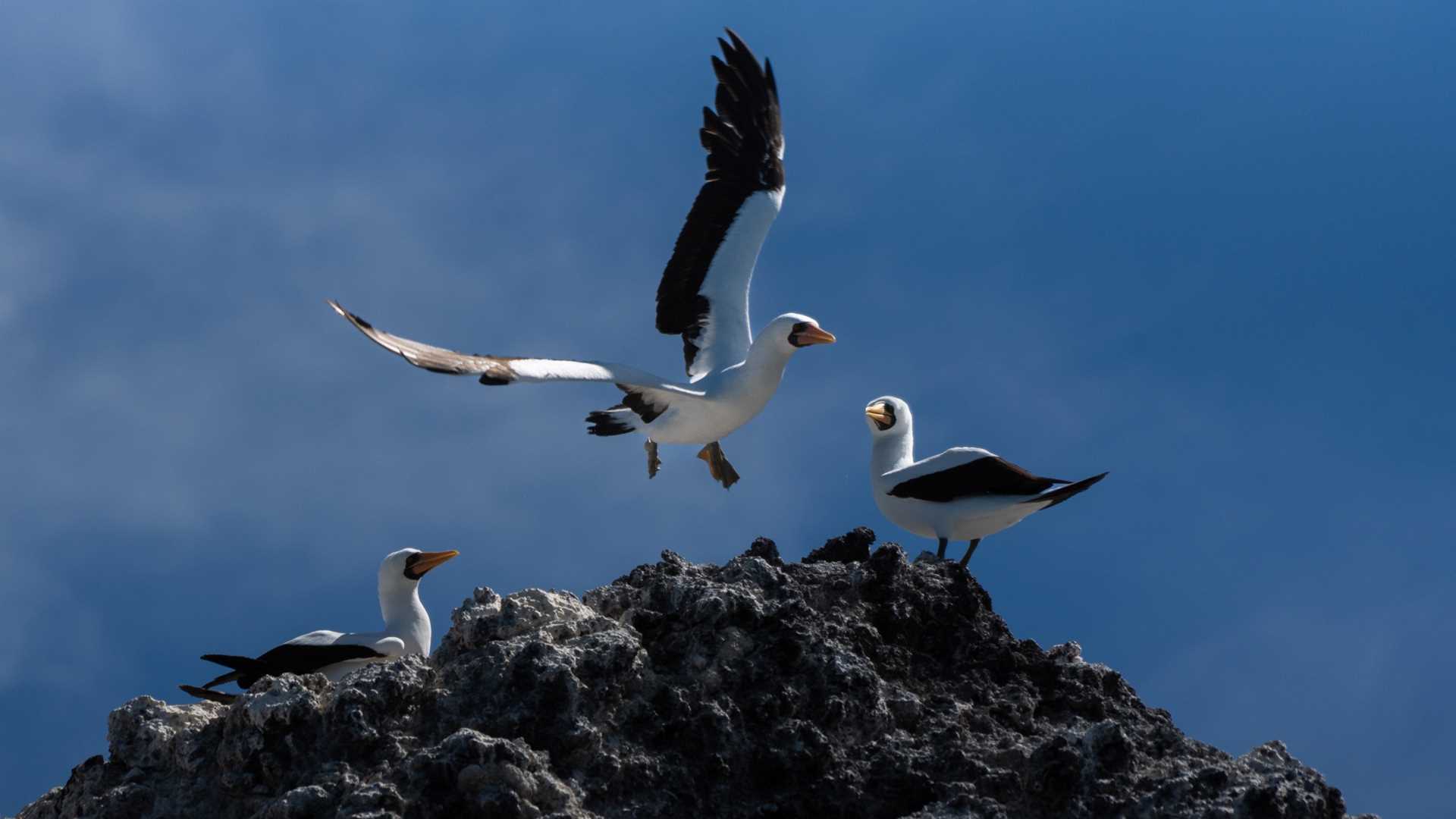Santiago Island is known for its unique landscapes and abundant wildlife; it provides an opportunity to connect with the incredible biodiversity of the archipelago. Our day started with a pre-breakfast visit to Espumilla Beach. This is a stunning long beach, and as soon as we got there we encountered a juvenile Galapagos hawk; it was very curious, perching on a mangrove branch, while other seabirds were doing their daily routine.
We then moved the ship to Buccaneer Bay. We explored along the shore with our Zodiacs, searching for blue-footed and Nazca boobies. We admired the landscape of the area with its contrasting colors provided by birds, rocks, plants, and even the sky, creating a beautiful portrait. Afterward we enjoyed Mexican lunch in the dining room — definitely one of the favorites of the week.
After an adventurous morning at Buccaneer Bay, we set off to explore Puerto Egas, a unique site known for its volcanic terrain and intriguing wildlife. The area featured an otherworldly landscape of black lava fields and tide pools. It was fascinating to observe marine iguanas sunbathing on the dark rocks, seemingly unfazed by our presence. Lava lizards darted among the cracks, showcasing their remarkable adaptations to the harsh environment.
As we ventured deeper into the island, we encountered Galapagos fur seals, basking in the sun and swimming in the water. Equally captivating were the Sally Lightfoot crabs, their vibrant red and blue colors adding a splash of brilliance to the otherwise stark surroundings.
Witnessing the wildlife in its natural habitat, and learning the history of the area, made for a humbling experience; it reinforced the need to protect these extraordinary islands and their fragile ecosystems. Santiago Island offered a captivating blend of natural beauty, biodiversity, and geological wonder. It was a visit that will forever remain etched in our memories, a testament to the unique and precious environment of the Galapagos.









